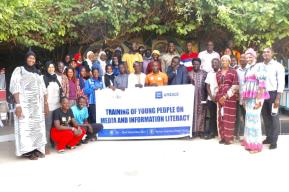Community Media
Community media is independent, community owned and managed media. It is an alternative medium to public and commercial media, and therefore important for a pluralistic media ecology as it helps prevent concentration of media ownership and allows people to exercise their right to freedom of expression. Their clear definition and recognition in law are necessary for them to operate legally and without ideological, political or economic pressure. States may actively promote community media by different measures, such as reserving specific parts of the radio frequency spectrum for community radio, preferential prices for licenses, public funding, etc.
COVID-19
Voice of women, local radio and gender equality in Burundi
Testimonies of rural women whose lives have been transformed with the creation of a local radio dedicated to women in the community. Radio Ijwi ry'Umukenyezi (Voice of Women) in Burundi is pushing back sexist stereotypes in its community and encouraging women to become active and independent through its broadcasts.

Stories
Publications







